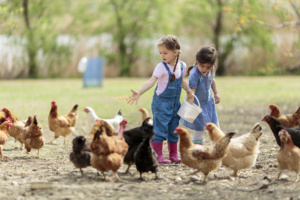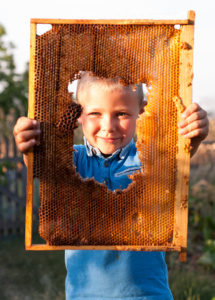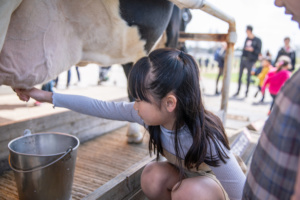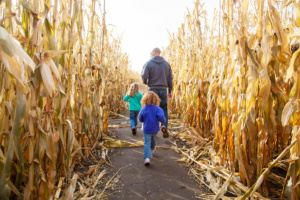Teaching Your Children
Where Their Food Comes From
Article By | Tamara Menges, Light Filled Home
Since we bought our farmhouse three years ago, I have desired to grow a garden. There are so many lessons to be learned from the garden from patience to perseverance to dealing with disappointment when seeds don’t grow. I want to share these lessons and also learn alongside our daughter. I envision us planting, weeding and harvesting together as a family, then enjoying the fruitfulness of hard work as we enjoy a meal made with various vegetables that we grew ourselves.
But, here we are three years later, and we still have no garden. If you’re like me, and you too, want to plant a garden maybe you’re overwhelmed with getting started. I know that’s what is holding me back. But, a huge part of wanting to have our own garden is to teach our four-year-old daughter where our food really comes from; in addition to the many life lessons we could glean. I want to teach her that there are hardworking men and women, and even kids who tend to tiny little seeds, hoping that they will provide for their family as they grow and harvest them to sell to others.
So, I want to offer some encouragement that you can teach your children where their food really comes from without having a personal garden. As a family we have discovered a couple ways that work for us until we feel confident in having the time to put in to our own garden, as well as a couple we plan to explore in the very near future.
Jollisant Farms: Jollisant Farms is one of our favorite places to go explore. At different times of the year you can pick strawberries to your hearts content right off the plant, as well as onions, blackberries, and pumpkins. They also have a small market area inside where you can buy fresh squash, watermelons, zucchinis and more. As we walk along the rows of strawberries looking for the best ones to pick we chat about the different sizes and colors of each berry. I also point out the flowers, and share how they turn into strawberries. It’s easy to find several stages of the strawberry as you walk along, and for it to create an interactive learning experience.
BeeWeaver Honey Farm: We love honey in our home, and use quite a bit. A spontaneous drive led us to finding a sign for the BeaWeaver Honey Farm. We were delightfully intrigued with getting to watch honeybees as they worked away making honey. We were able to learn just how they intricately make the honeycomb and turn pollen into honey during our unplanned trip. We were also able to try various honeys from all over the country.
Jersey Barnyard: Jersey Barnyard is a 100 year old, multi-generation farm in La Grange, close enough for a day trip. They are open almost every day of the year, and offer so many fun ways to teach kids, and adults alike, truly what its like to raise and grow the very types of foods we buy in the grocery stores. They offer guided tours of the farms where you get to feed and pet various farm animals, bottle feed calves, and even tour their dairy barn and try to milk a cow! Your children have the opportunity to get hands on experience to learn that milk doesn’t actually come from a plastic jug or cardboard container.
P-6 Farms: We thoroughly enjoyed a visit to P-6 Farms last October where we got to go on a hayride to learn about the farm, as well as several vintage carnival rides, and we adventured through a giant corn maze. But, I recently learned about their farm camp for kids. They offer kids the opportunity to interact with various farm animals and try their own hand at gardening; I wonder if they let mamas tag along? P-6 Farms also lets the kids pick fresh fruits and vegetables from the garden to make homemade treats, and they allow the kids to learn about tending to cattle. This can open up a conversation about where our meats come from, and also about respect and care for the animals that ultimately provide food for us.
Teaching our children about where food actually comes from does not have to be a long drawn out conversation. It can be as simple as a trip to a local farm so their eyes, hands, and minds can just explore and learn by experiencing where our food comes from first hand.



